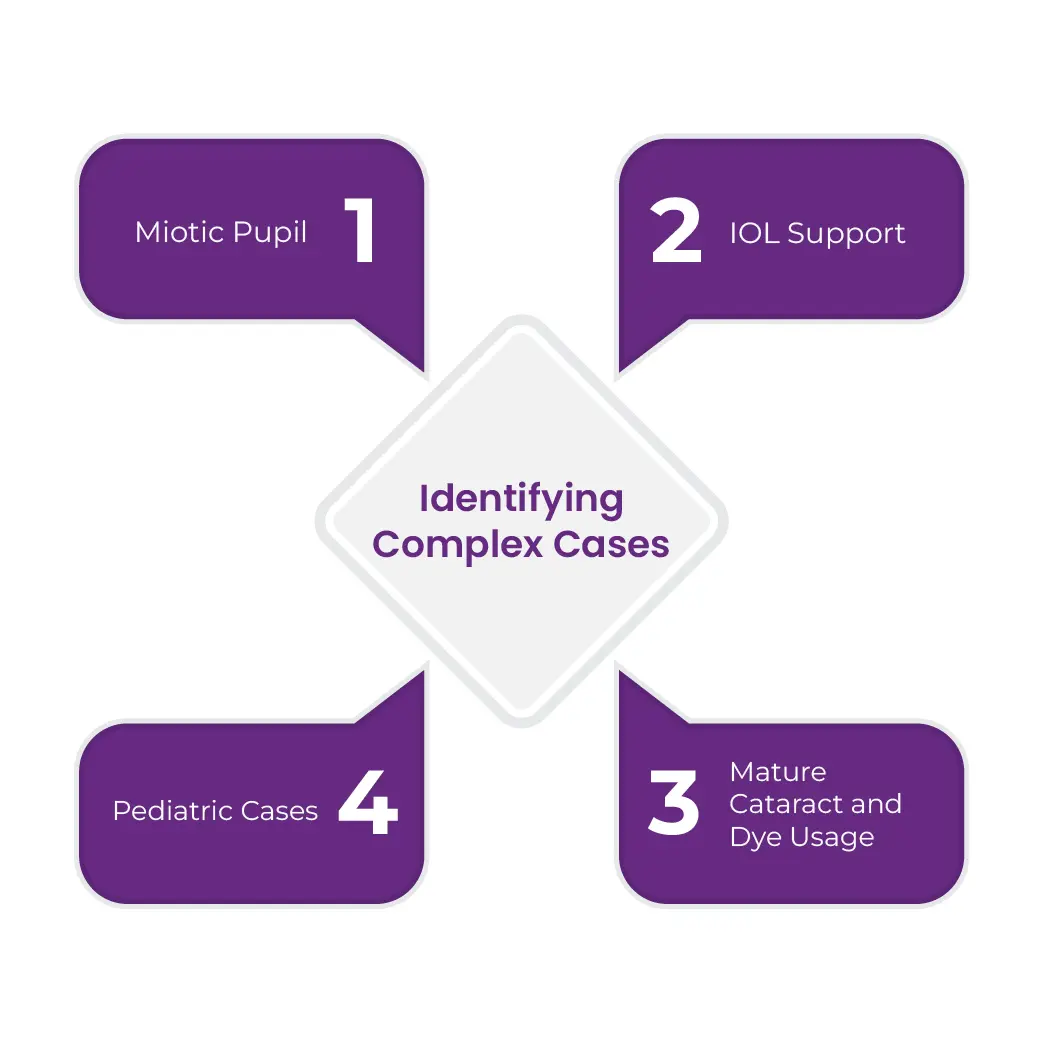Cataract surgery is a life-changing procedure that restores sight and improves patient quality of life. Have you ever felt a slight chill run down your spine when it comes to billing for these procedures? Or perhaps you've found yourself flipping through coding manuals, searching for that elusive perfect fit.
This blog is your roadmap to clear and confident coding for cataract surgery. We'll break down the most common cataract surgery cpt codes, guide you through choosing the right one for each case, and address any potential coding roadblocks you might encounter.
Buckle up because this blog is your guide to demystifying CPTs and streamlining your billing process!
Commonly Used CPT Codes for Cataract Surgery
The Centers for Medicare & Medicaid Services (CMS) released a report comparing billing practices for cataract surgeries. Specifically, it looked at how often cataract surgeries are billed as complex. 66982 cpt code is used for billing complex cataract surgeries. It includes the same basic procedure as standard cataract surgery (CPT 66984) but with additional complexities.
1. Removal of Lens Material Codes:
These codes describe various techniques used to remove the cataractous lens material itself, but they are not used for billing the entire cataract surgery with IOL implantation:
-
66840: Removal of Lens Material; Aspiration Technique, 1 or More Stages (rarely used)
-
66850: Removal of Lens Material; Phacofragmentation Technique (mechanical or ultrasonic) (e.g., phacoemulsification), with Aspiration (most common technique for standard cataract surgery)
-
66852: Removal of Lens Material; Pars Plana Approach, With or Without Vitrectomy (used for specific situations)
-
66920: Removal of Lens Material; Intracapsular (rarely used nowadays)
-
66930: Removal of Lens Material; Intracapsular, For Dislocated Lens (used for specific situations)
-
66940: Removal of Lens Material; Extracapsular (Other Than 66840, 66850, 66852) (used for less common techniques)
2. Cataract Surgery with IOL Implantation Codes:
These codes encompass the entire procedure and are used for billing cataract surgery with IOL placement:
-
66983: Intracapsular Cataract Extraction with Insertion of Intraocular Lens Prosthesis (1 Stage Procedure) (rarely used)
-
66984: Extracapsular Cataract Removal with Insertion of Intraocular Lens Prosthesis (1 Stage Procedure), Manual or Mechanical Technique (e.g., irrigation and aspiration or phacoemulsification); Without Endoscopic Cyclophotocoagulation (most common code for standard cataract surgery with IOL)
-
66988: Extracapsular Cataract Removal with Insertion of Intraocular Lens Prosthesis (1 Stage Procedure), Manual or Mechanical Technique (e.g., irrigation and aspiration or phacoemulsification); With Endoscopic Cyclophotocoagulation (used in specific situations)
How to Document Complex Caratact Surgery For Optimal Reimbursement
While the initial wording of CPT code 66982 appears similar to standard cataract surgery (CPT code 66984), a key distinction exists. Complex cataract surgery involves
-
Devices or Techniques Not Used Routinely: This could include iris expansion devices, suture support for the IOL, or primary posterior capsulorrhexis.
-
Pediatric Cases: Surgery performed on patients in the amblyogenic developmental stage.
The operative report serves as the foundation for justifying the complex code (CPT 66982). It should clearly detail:
-
Why: The specific indications (supporting diagnosis) requiring the use of advanced devices or techniques.
-
How: A detailed description of the devices or techniques employed during the surgery.
Identifying Complex Cases:
While local coverage determination (LCD) policies for complex cataract surgery may vary, some general indicators can help you assess the situation:

-
Miotic Pupil: Is a miotic (constricted) pupil preventing adequate dilation, necessitating special instruments?
-
IOL Support: Does the IOL require additional support like a capsular tension ring or intraocular sutures?
-
Pediatric Cases: Is this a pediatric cataract surgery involving IOL implantation?
-
Mature Cataract and Dye Usage: Does the case involve a mature cataract requiring dye? (Note: Check with the payer as not all consider dye usage a justification for complex billing.)
A "Yes" to any of these questions suggests potential complexity. In such cases, submitting CPT code 66982 is appropriate. Remember, complexity is not determined by surgical difficulty, but by the use of additional devices or operating on a child.
While most complex cases are identified pre-operatively, unforeseen circumstances might necessitate the use of additional qualifying devices or techniques during surgery. It's crucial to document these intraoperative decisions meticulously. Both the physician and facility should submit the case as "complex" with CPT code 66982 in such scenarios.
Final Words
Capping off this journey into cataract surgery CPT codes, we've explored strategies to ensure smooth reimbursement and accurate billing for your practice. Remember, proper coding is vital for sustaining the quality patient care you provide. Throughout this blog, we've unpacked the key distinctions between CPT codes.
For situations where uncertainty arises, consulting with a medical coding specialist is always advisable. By mastering these aspects of cataract surgery coding, you can ensure a smooth billing process, optimize reimbursement for your practice, and ultimately, focus on delivering the best possible care to your patients.
ABOUT AUTHOR

John Whick
As a blog writer with years of experience in the healthcare industry, I have got what it takes to write well-researched content that adds value for the audience. I am a curious individual by nature, driven by passion and I translate that into my writings. I aspire to be among the leading content writers in the world.
